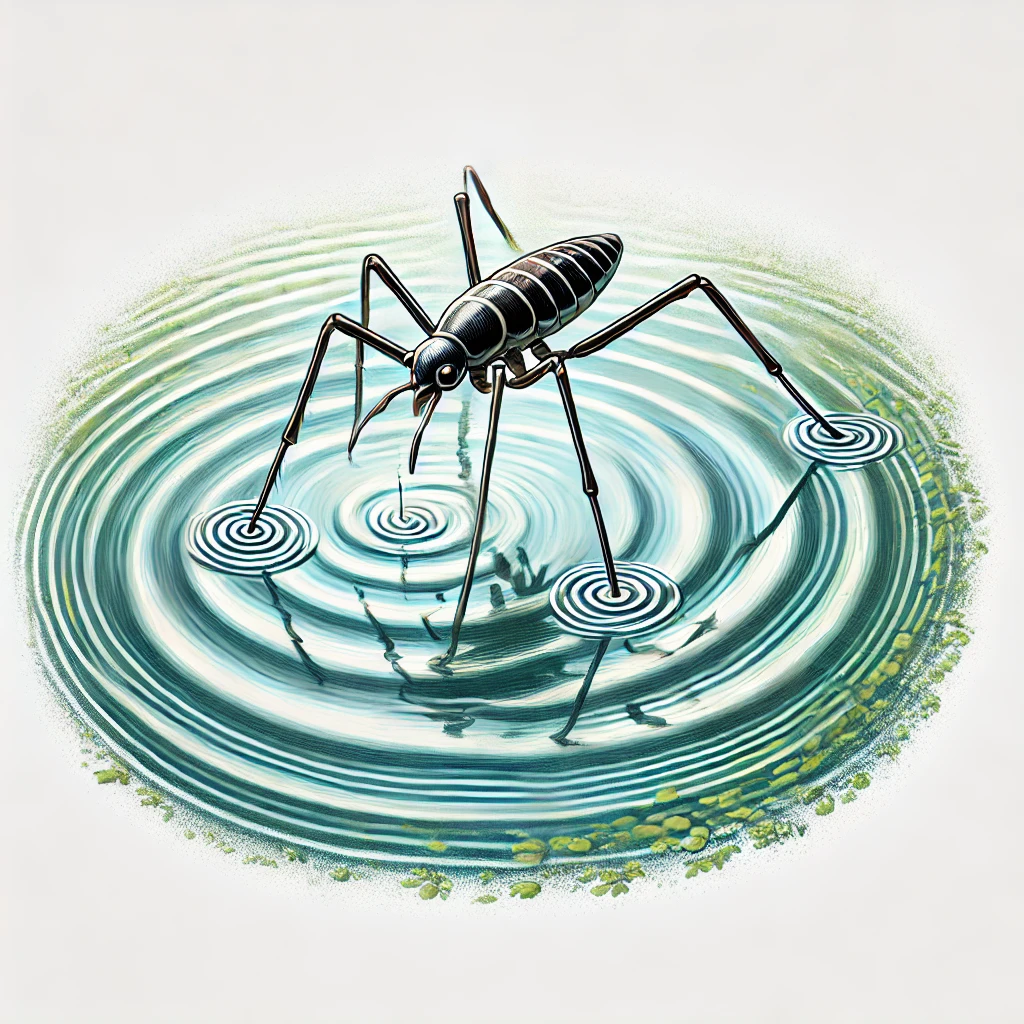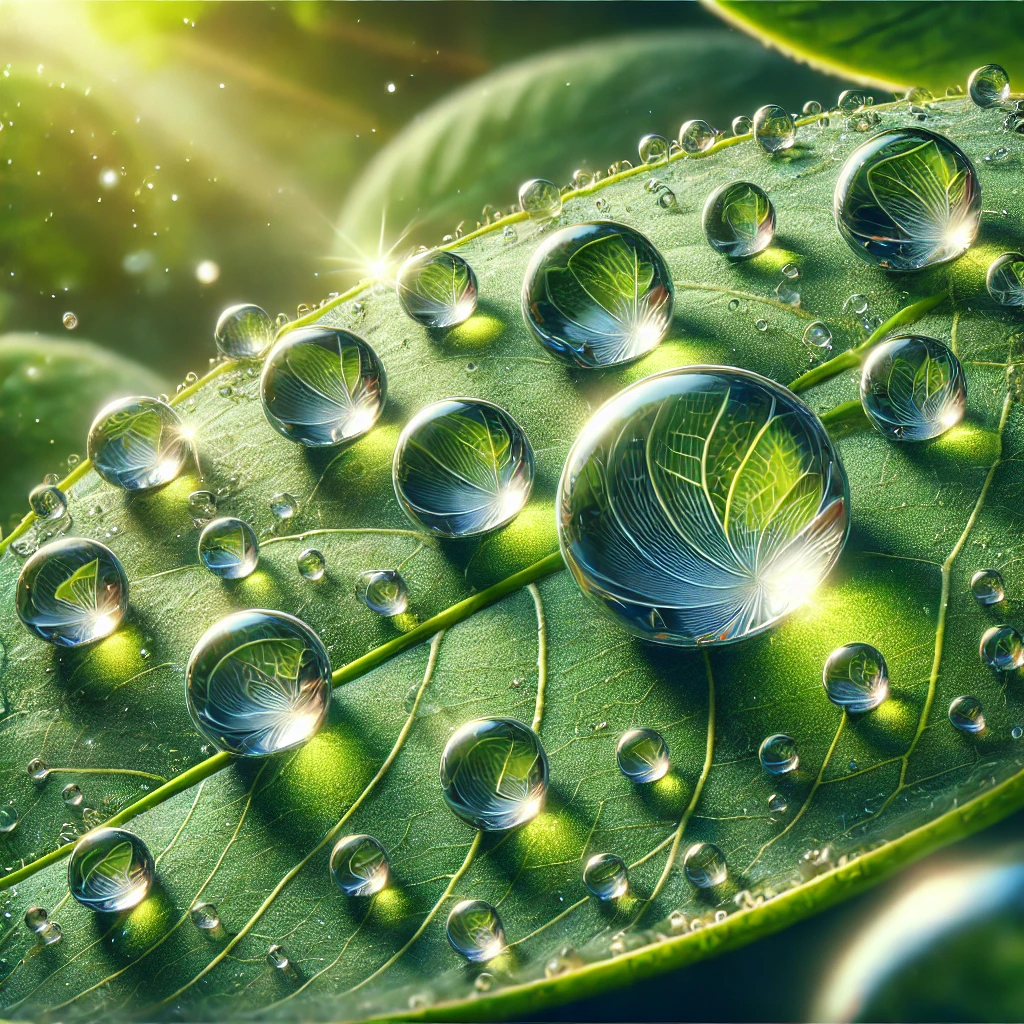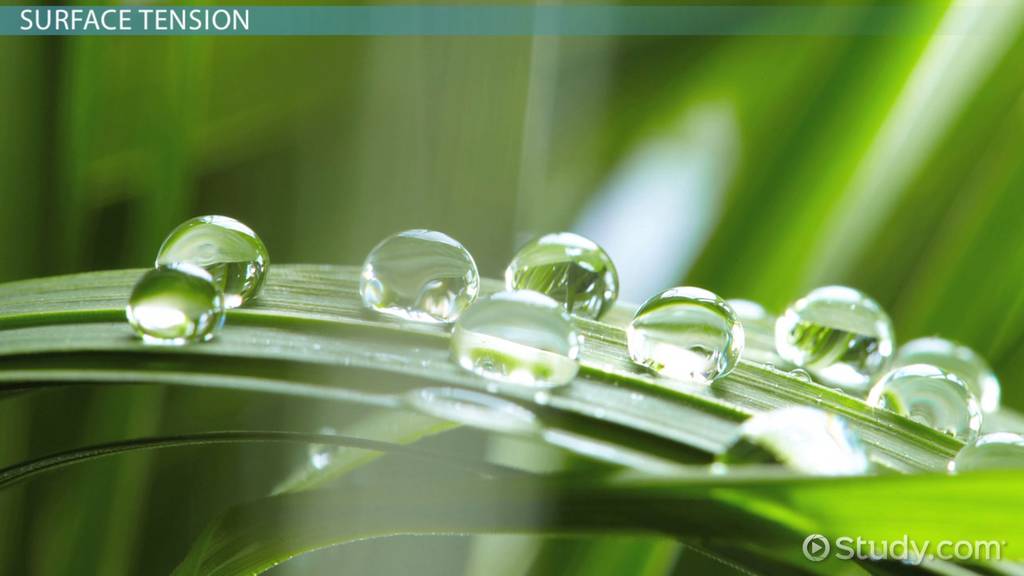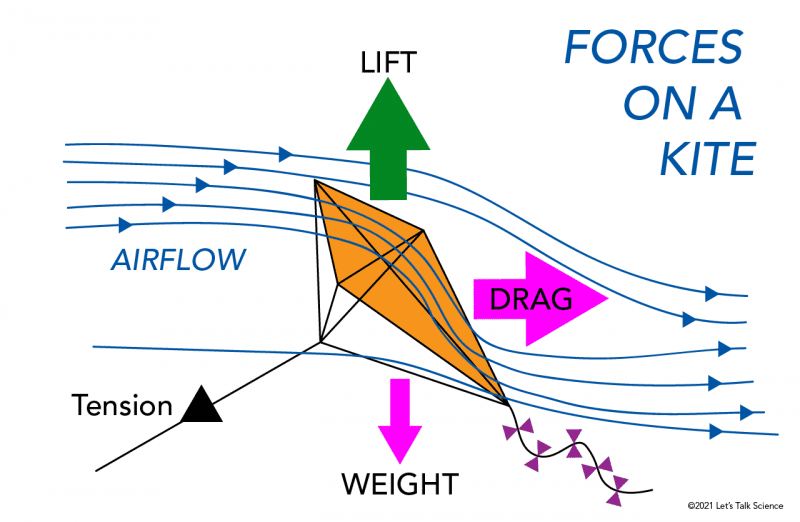Your cart is currently empty!
Discover the Magic of Everyday Science: Embrace the Wonders of Real-World Physics
By Claude TUYISHIME, Mentee Writers Hub/Real-World Physics
Have you ever marveled at how water droplets stay intact on leaves after rain, or how tiny insects glide effortlessly across the surface of a pond? These everyday occurrences are all thanks to surface tension, a fascinating property of liquids that has practical implications in our daily lives. Let’s dive into the science behind surface tension and its real-world applications, with examples that you can relate to.
What is Surface Tension?
Surface tension is the force per unit length that acts along the surface of a liquid, causing it to behave like a stretched elastic sheet. This property is the result of cohesive forces—the attraction between molecules of the same substance—which pull liquid molecules together at the surface, creating a sort of “skin.”
For example, water molecules at the surface experience a stronger inward pull from neighboring molecules, forming a barrier that resists external forces. This phenomenon explains why water can hold its shape in droplets and why some small objects, like paper clips, can float on water despite being denser than it.
Everyday Examples of Surface Tension
Here are some real-world scenarios where surface tension plays a role:
Insects Walking on Water Small insects, such as water striders, use surface tension to their advantage. The tension creates a stable surface strong enough to support their weight, allowing them to “walk” on water without sinking. This remarkable feat showcases how even tiny forces can have significant effects in nature

Rain Droplets on Leaves Have you noticed how rainwater forms nearly perfect spheres on leaves? This happens because of surface tension and cohesion forces. The water molecules at the surface pull inward, minimizing the droplet’s surface area and creating its spherical shape. It’s nature’s way of keeping the water intact until it evaporates or slides off.

Bubble Formation When you blow soap bubbles, the surface tension of water creates the thin film that traps air inside. Adding soap reduces the water’s surface tension, allowing the film to stretch and form large, colorful bubbles. Without soap, water alone cannot hold the bubble shape.

Filling a Glass Beyond Its Brim If you’ve ever filled a glass of water so full that it’s slightly over the rim but hasn’t spilled, you’ve witnessed surface tension in action. The cohesive forces hold the water molecules together, creating a dome-like shape at the top of the glass.

Why Water Alone Can’t Clean Effectively
When washing clothes or dishes, you may notice that water alone isn’t enough to remove dirt, especially grease or oil. This is because the high surface tension of water prevents it from spreading and penetrating into dirt and fabric fibers effectively. By adding soap or detergent, we reduce water’s surface tension, enabling it to interact with and dissolve dirt particles. That’s why soaps and detergents are indispensable in cleaning.
Hot Water and Surface Tension
Have you ever wondered why hot water is often more effective for washing? Heating water reduces its surface tension, making it easier for the water to spread and break down grease or fatty substances. That’s why hot water and detergent together are a powerful combination for cleaning tough stains.
Physics in Everyday Life: Takeaways for Youth
Understanding surface tension isn’t just a physics lesson—it’s a gateway to appreciating how science shapes our world. Here are some key takeaways:
- Surface tension is what allows water to form droplets, support small insects, and create bubbles.
- By reducing surface tension with soap or heat, we enhance water’s ability to clean.
- Observing surface tension in action can spark curiosity about other scientific principles in daily life.
So, the next time you see a water droplet clinging to a leaf or watch soap bubbles float away, remember: you’re witnessing the wonders of physics in action. With this knowledge, you’re better equipped to understand and even leverage these principles in your own life.
Stay curious, and keep exploring the physics all around you! For more engaging topics like this, check out the “Real-World Physics” section of our Youth Skills IQ blog.
Claude TUYISHIME, Mentee Writers Hub/Real-World Physics


-
Youth and Finance Series #3: The Parable of Tamaa and Mnyenyekevu
-
Understanding Mental Health Conditions in Refugee Contexts (Part III): Case Studies I & II
-
Understanding Surface Tension
- Energy Essentials: Youth in a Power-Driven World/Manzi BIRAGUMA, Real-World Physics/Claude TUYISHIME
Turning Solid Waste into Gas for Home, Industrial, and Vehicle Fuel Use
-
Youth and Finance Series #2: Mastering the Art of Budgeting
-
Youth and Finance Series #1: The Saving Mindset
-
Understanding Mental Health Conditions in Refugee Context (Part II): Depression
-
Understanding Mental Health Conditions in Refugee Contexts (Part I): PTSD
-
Youth Mental Health Matters
-
Using Energy Sustainably in the Community

Powering Our Future: Exploring Energy Sources and the Journey to Sustainable Solutions

Mastering the Wind: How Air Resistance Shapes Our World
13 responses to “Understanding Surface Tension”
Physics is taking our world far so we need to be active with what we see in real life.
Not physics alone but all science subjects. This specific topic has been very crucial in the fast developing world and I think we should embrace its knowledge and perfect the world
Yes Tuyishime Claude, you will remove all wonders in youth if you continue to explore physics in real world
Very fantastic and clear. Thanks man keep it up
So amazing
Brilliant idea
𝑰 𝒘𝒊𝒔𝒉 𝒕𝒐 𝒃𝒆 𝒘𝒊𝒕𝒉 𝒄𝒍𝒂𝒖𝒅 𝒕𝒐 𝒂𝒍𝒔𝒐 𝒃𝒆 𝒂 𝒘𝒐𝒓𝒍𝒅 𝒑𝒉𝒚𝒔𝒊𝒄𝒊𝒂𝒏. 𝑰 𝒍𝒊𝒌𝒆 𝒚𝒐𝒖 𝒊𝒅𝒆𝒂 𝒎𝒂 𝒃𝒓
Thank you for the support you would like to show… support the articles of Tuyishime Claude and you will always be with him in the world of physics
Thx bro
so amazing
You are doing something
So great
Thanks for hardwork.
Continue with world science


Leave a Reply